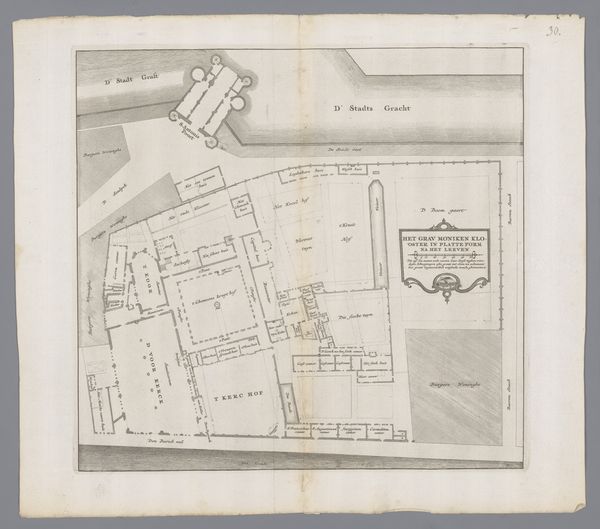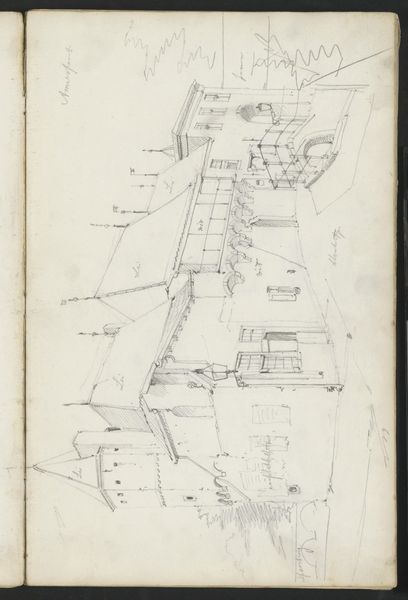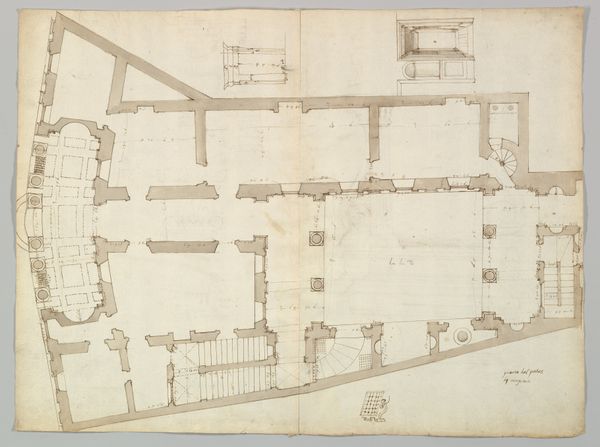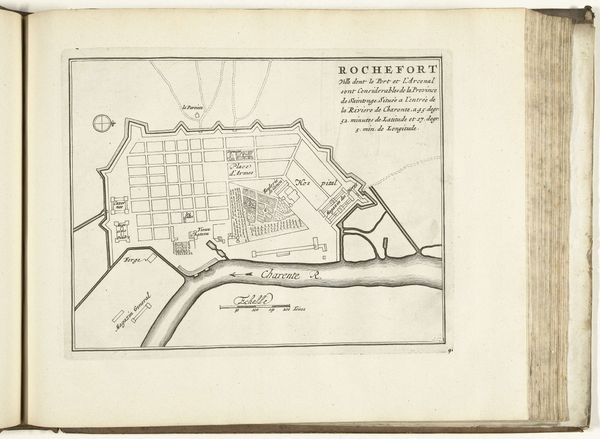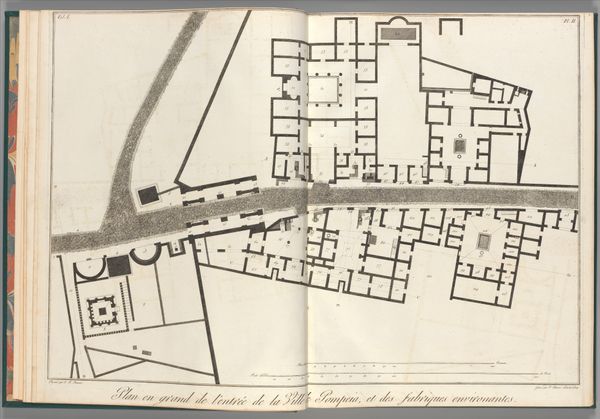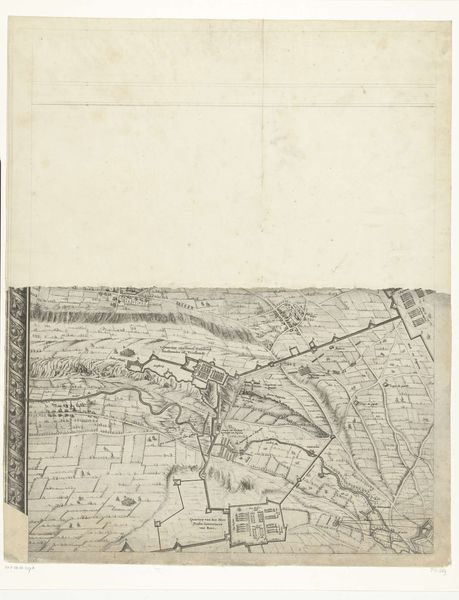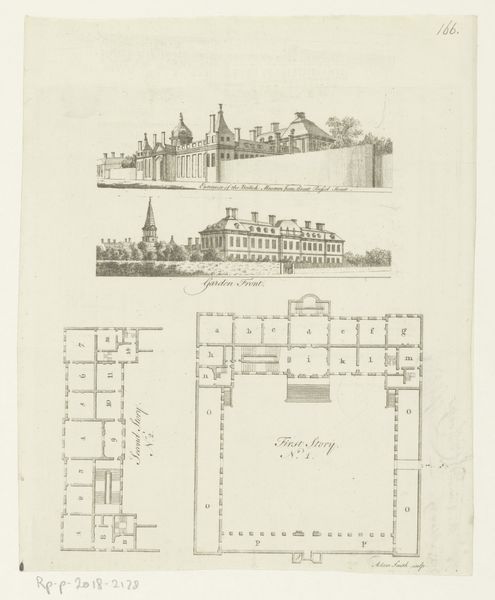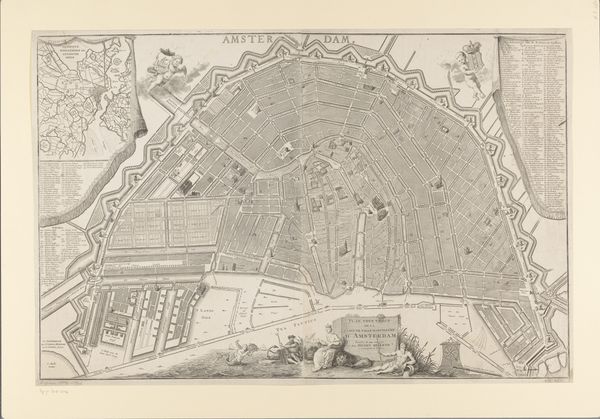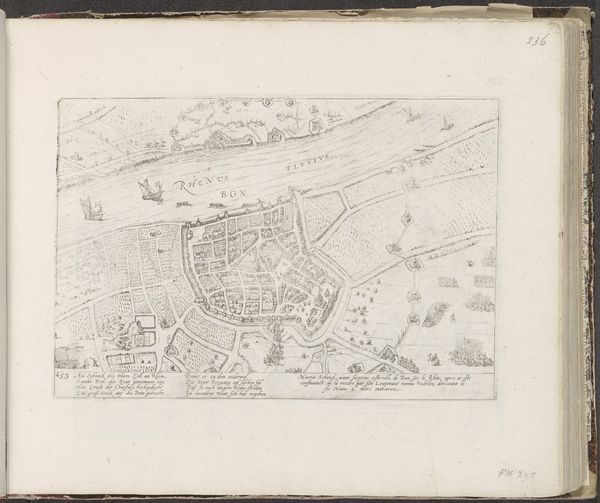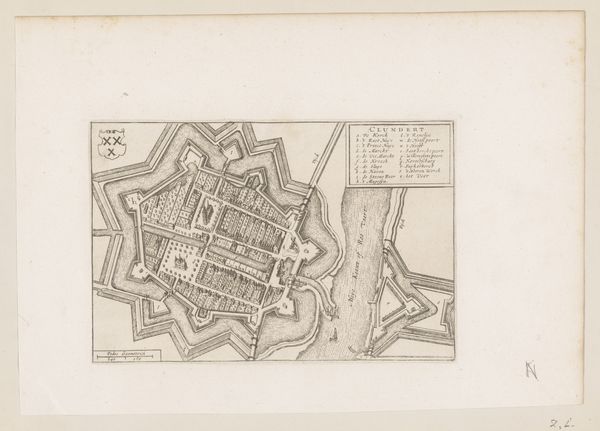
drawing, print, etching, paper, architecture
#
drawing
#
neoclacissism
# print
#
etching
#
etching
#
paper
#
architectural drawing
#
architecture
Dimensions: 19-5/8 x 13-9/16 in. (49.9 x 34.5 cm)
Copyright: Public Domain
Curator: The etching before us, "Design for a Ceiling," dating to between 1774 and 1778, offers us a fascinating peek into the world of architectural design during the Neoclassical period. The artist here is Leonardo Marini, and this work on paper is currently housed at The Metropolitan Museum of Art. Editor: My initial impression is one of quiet elegance. There's a delicate quality to the lines and the symmetry promises a very calming effect when realized in a space. Curator: Absolutely. That quiet elegance speaks volumes about the socio-political context. Neoclassicism arose in part as a rejection of the more exuberant Rococo style, embracing instead the perceived order and rationality of the classical world. This was an era increasingly preoccupied with notions of civic virtue, republicanism, and a sense of imperial legacy reborn. How does this drawing speak to these values? Editor: I see a careful consideration of power, for sure. Note the recurring motifs, the rosettes, and the intricate geometric patterns, recalling similar ornamentation in ancient Roman villas, all intending to connect the present to a glorious past. The emphasis on clarity and order would, in its intended architectural form, lend a sense of authority. It subtly suggests an ideal—or perhaps an idealized—world. Curator: And those floral motifs – I am compelled by their placement amidst such regimented design. How would you interpret their role? Editor: Well, flowers often symbolize prosperity, beauty, even ephemerality. The interplay of the rigorously structured design with these organic elements adds a layer of complexity. Is it a visual metaphor suggesting that even within the most rigid structures, there is space for beauty, nature, and growth? The artist invites us to ponder the symbolic language carefully chosen to communicate values about order and elegance. Curator: Exactly, the choice of visual lexicon carries intentionality to communicate culture. Thinking about cultural continuity and collective identity, this piece gives food for thought, showing that even architectural design contains memory and purpose. Editor: It really brings the history and values of a period into clear view. Curator: Agreed; it’s amazing how one ceiling design opens so many windows to understanding a historical epoch.
Comments
No comments
Be the first to comment and join the conversation on the ultimate creative platform.
